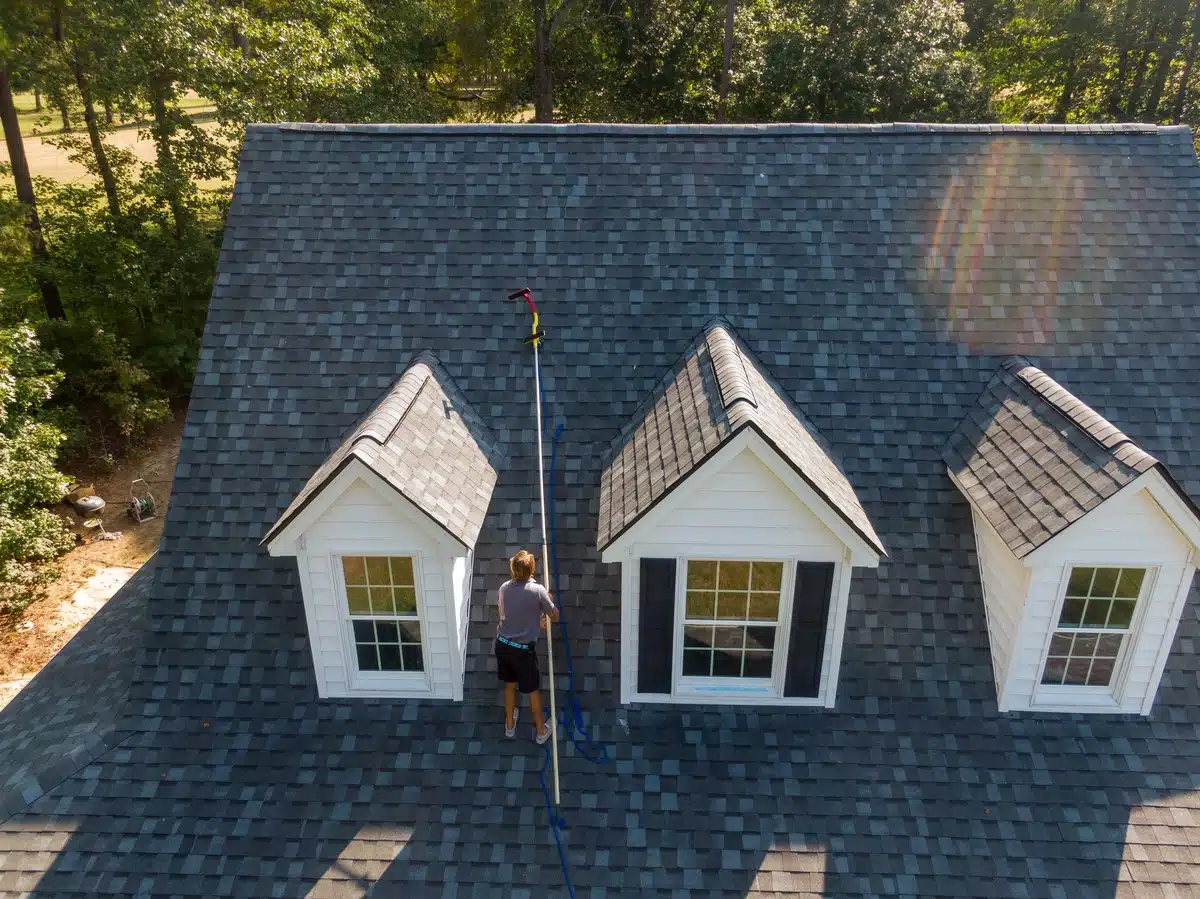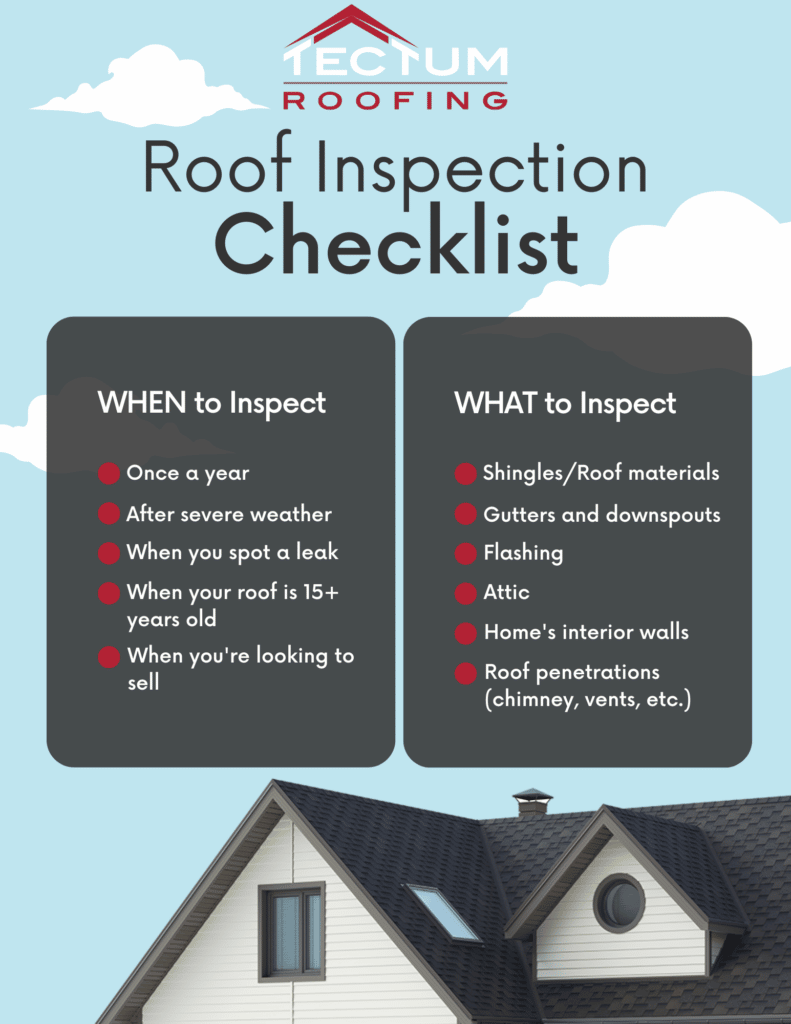

When was the last time you had your roof inspected? Be honest.
Don’t worry; you’re not alone.
In fact, nearly 1 in 4 homeowners admit they’ve never inspected their roof or had it inspected (unless there was an issue). It’s actually recommended that you inspect your roof at least once every year— maybe even more as it ages 15+ years. This is so you can catch any potential damage or leaks before they become massive, costly repairs.
But it’s also great practice to get informed and familiar with the condition of your roof yourself. That’s why we put together this roof inspection checklist to complete the most basic and beneficial inspection practices for your property. Avoid expensive repairs by catching things early!
Let’s start with the basics of what a roof inspection is and why it’s important.
A roof inspection is a process where you (or a professional) examine your roof for any potential damage, leaks, or other problems. This is important to do at least once a year as it can help you catch small problems before they become big and expensive ones.
While we always recommend getting professional repairs done, you can easily DIY a roofing inspection if you know what to look for. Some roof inspection tips:
A general rule of thumb in the industry is to inspect your roof after severe weather (hail, wind, rain) and at least once a year on your own. However, a professional inspection should be done every 2-5 years or if you suspect any damage. Things that can affect how often you inspect your roof include:
Certain types of roofing materials last a lot longer than others or are built to be more durable. Materials like asphalt shingles, cedar shakes, or green roofs should be inspected every year, for sure. They are meant to last anywhere from 15 to 30 years and could be more susceptible to issues early on.
Metal, slate, and tile roofs, on the other hand, are much more durable against the elements and less likely to experience extensive damage during a storm. They can last anywhere from 35 to 100 years! Inspections are still very important but could be done less frequently or only after a severe weather event.
As your roof ages, it faces tons of wear and tear just from exposure to the elements. The older the roof, the more susceptible it becomes to leaks, damage, and other issues. This is the time when inspections are highly important and should be done with a bit more frequency. This is especially true if you are nearing the end of your roof’s lifespan or aging out of a warranty. Catching those issues before they end is vital— unless you like paying for repairs out of pocket. But we doubt it.
Your location can play a role in how often you inspect your roof and for what. If you live somewhere with year-round tropical weather or severe thunderstorms, it’s important to keep an eye out for damage after each event. These areas are more likely to experience leaks, missing shingles, or mold growth. On the other hand, if you live in an area with mild weather, you might get away with inspecting your roof less frequently.
If you have a lot of trees on your property, it’s important to inspect your roof more frequently for things like moss growth or branches that could fall and cause damage. Falling leaves can also clog your gutters and downspouts, which can lead to water damage on your roof if not cleared out.
If you check any of those boxes, then you should inspect your roof right away! Just kidding. You should read through our handy-dandy roof inspection checklist first. This will help you know where to look, what to look for, and how to spot the not-so-obvious signs of roof damage.
Start by looking at your shingles from the ground. If you can’t see any damage, that doesn’t mean there isn’t any— you might just need to get a closer look. But if you do see damage like cracks, missing granules, or curling, then those are all signs of roof damage that need to be repaired right away.
Next, take a look at your gutters and downspouts to make sure they are clear of any debris. Things like leaves, twigs, and dirt can clog up your gutters and downspouts and cause water damage to your roof. If you notice any clogs, be sure to clear them out right away. Your gutters and downspouts are also a good place to check for granule loss, as anything washed off your shingles would end up there.
Your roof’s flashing found around chimneys, dormers, skylights, vents, etc., is intended to keep those penetrations leak-free. Unfortunately, they also can get damaged easily from severe weather, which immediately makes these areas susceptible to leaks.
If you notice water stains in your home near the chimney or lined up under any of these roof penetrations, there’s a very good chance the flashing is damaged and needs to be repaired.
If you have any water stains, mold, or mildew in your home, it’s important to find the source of the issue right away. These could be signs of a roof leak, which, if left unaddressed, can cause extensive damage to your home. If you do find leaks, be sure to mark the area and have a professional take a look as soon as possible.
Take a look around your property for any large debris that could have come from your roof. Things like tree branches, hailstones, or even nails can cause damage to your roof and should be removed as soon as possible. If you notice any large branches on your roof, it doesn’t necessarily mean there’s damage, but it’s a good sign to take a closer look.
These are all areas where leaks are common, so it’s important to inspect them closely for any damage. Things to look for include cracked or missing caulk, rust spots, or any gaps.

While it’s important to know how to inspect your roof, we understand that not everyone is comfortable doing so. If you’d rather leave it to the professionals, we don’t blame you!
Here at Tectum Roofing, we offer free roof inspections to homeowners across Colorado Springs. If you suspect a leak, get in touch with Tectum!